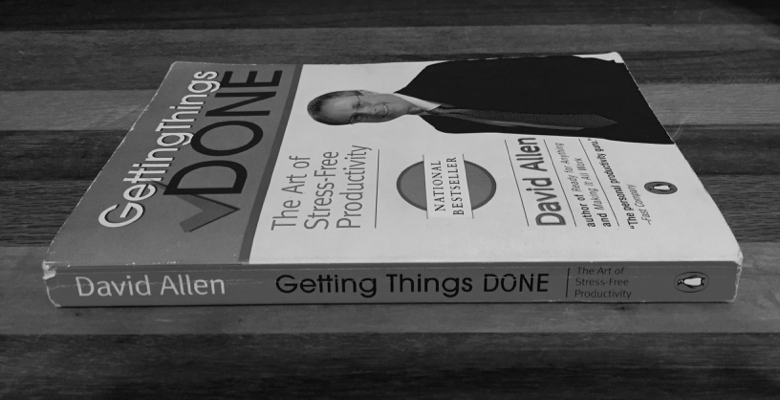The Basics of Getting Things Done, Part I

This post is part one in a series. Part two is here! How often do you think about your own brain? If you’re like me, not often enough. We take our brains for granted most of the time, as we do with most of the wonderful things in our lives. It’s just how we’re wired: we can’t notice everything all the time. The human brain is great at coming up with ideas and solving problems. It can do the most mind-blowing things (pun intended):
- Develop a vaccine for polio
- Write Macbeth, Hamlet and King Lear
- Paint the ceiling of the Sistine Chapel and sculpt the Pietà
- Solve a math problem that the rest of the world had considered impossible for 350 years
You and I might not be Jonas Salk, Shakespeare, Michelangelo or Andrew Wiles (well, I suppose you could be Andrew Wiles, and that would be awesome!), but our brains are no less impressive. They can:
- Imagine a completely different reality than the ones we’re in, create a plan to make that reality real, and successfully execute that plan
- Take us back in time many decades, or to a possible future that doesn’t exist yet
- Imagine what another human brain is thinking and feeling and adjust our own behavior accordingly
Our brains can do many incredible things incredibly well. But they do not make very good filing cabinets, and that’s what most of us use them for.
Time Management: The Normal Way (And Normal Ain’t Great)
Most of us keep track of our obligations in our heads, and we get by just fine. The big important stuff gets done (though sometimes at the last minute and with lots of deadline-induced stress), and most of the little stuff gets done, too. When life gets busy and we start to feel overwhelmed, we might make a to-do list and use it for a while (until things quiet down). We forget to do stuff sometimes, but usually not big stuff. Usually not. If we’re honest with ourselves, we’ll admit that we spend a lot of time thinking about things we need to do, which prevents us from getting “in the zone”? and doing focused work. Here’s the thing: the above situation is actually not an emergency. For most people, most of the time, it works well enough. Nothing is on fire here. However, there is an easier, less stressful approach.
What is Getting Things Done?
In 2011, I read a book by David Allen called Getting Things Done (or GTD) and it profoundly changed my life at every level:
- how I think in the moment
- how I approach each day
- how I look at the work of an entire lifetime
The book Getting Things Done presents a system (also called Getting Things Done) for managing your time and commitments, a way to track and organize what you have to do and when you’re going to do it. Here are the basic tenets:
- get your commitments out of your head and into an external system you trust (and the “trust”? part is critical)
- break every commitment down into manageable tasks (called Next Actions)
- put your brain to work actively doing, instead of trying to keep track of all the things you have to do
I run my life (work, home, everything) according to the principles in GTD, and I have never looked back. A quick aside: I know you’ve got a time- and task-management system of your own, and GTD is just one approach; it’s far from the only option. But, it’s been around since 2001 and has a huge following, so if you’re not completely happy with your personal organizational system, I invite you to consider a little change for one big reason: Getting Things Done can significantly increase productivity while simultaneously lowering stress levels. Even if you just incorporate one or two of the principles I’m going to cover (GTD isn’t an all-or-nothing proposition), you’ll see results: you’ll find yourself getting more done with less energy. And 90 seconds from now, you’re going to have an idea of what that feels like.
A Trial Run of Getting Things Done
I’d like to take you through a very short exercise (paraphrased and condensed from page 13 of the book) to demonstrate how GTD works. All you’ll need is a way to jot something down. Pen and paper, smartphone, laptop: any of these are fine. Got what you need? Here we go:
- Write down the project or situation that is most on your mind at this moment.
- Describe, in a single written sentence, your intended successful outcome for this problem or situation.
- Write down the very next physical action required to move the situation forward.
Simple enough. Now, here’s the important part: I’ll bet you a cup of coffee that you already feel better about this task. That you feel more relaxed and in control, and the task seems smaller and more manageable. That maybe, you want to get started on it right now. Imagine having this feeling all the time. Or, as David Allen puts it, “Imagine that motivation magnified a thousandfold, as a way to live and work.”? While we’re at it, let’s imagine a few more things:
- Imagine finishing each day with an empty email inbox.
- Imagine never having to wonder if you’re forgetting about something important.
- Imagine being able to see every obligation in your entire life listed out in front of you at any time. Every single thing you have to do. In your entire life.
This is all very possible. In part two of this series, I’ll explain how.